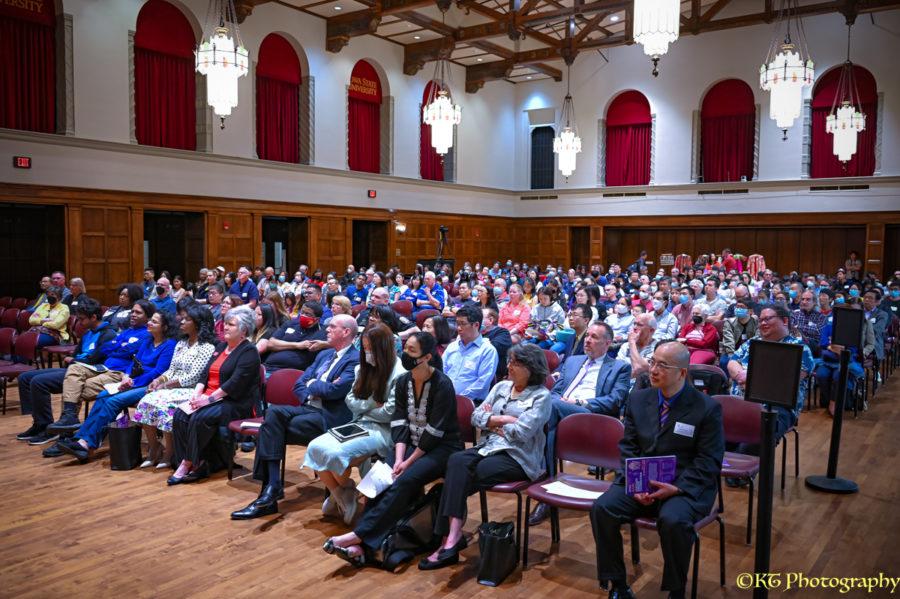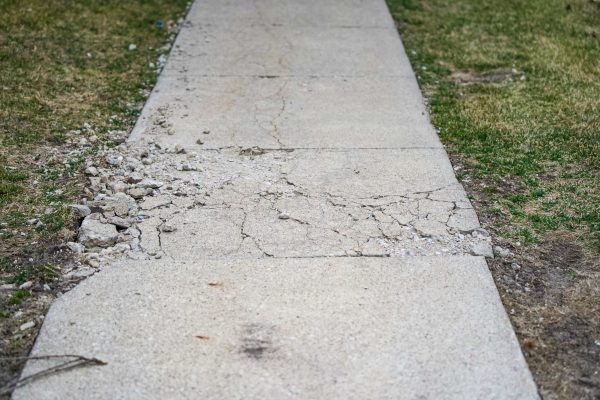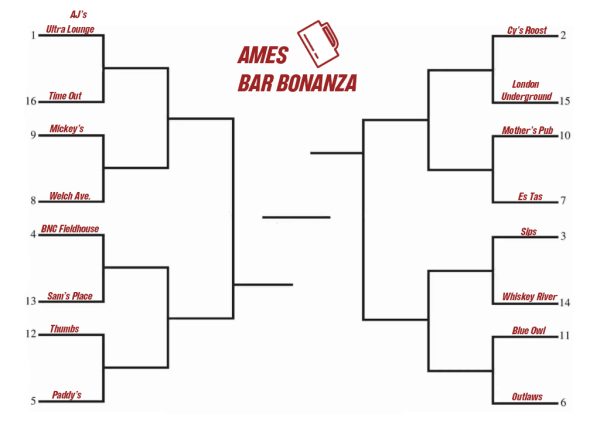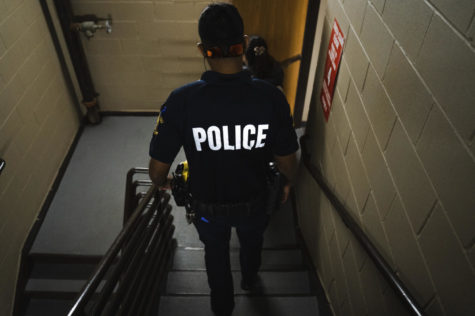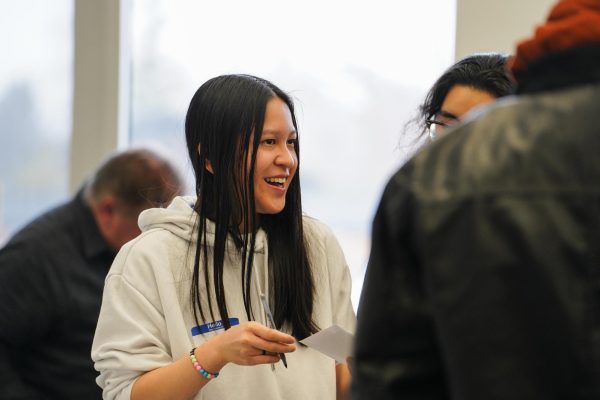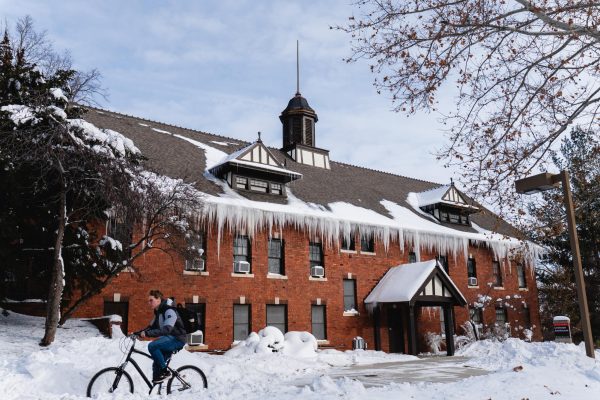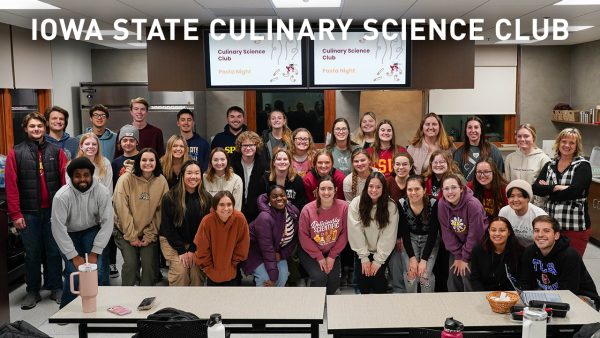Asian American and Pacific Islander heritage inaugural celebration
May 8, 2022
Editor’s note: This articles was updated to correctly reflect the implementation of the Chinese Exclusion Act and the quotas of the national origin system.
Musicians, administrators, researchers and writers were recognized locally and nationally during the Asian American and Pacific Islander Heritage Month Celebration on Saturday.
More than 300 people gathered at the Memorial Union to listen to leaders from Ames and Iowa State University. In addition to the keynote speaker Hilary Seo, dean of Library Services, there was a documentary on Asian American and Pacific Islander history and an award ceremony for the best essays on “AAPI In My Eyes.”
The organizing committee for the event was a collaboration between a steering committee and an essay contest committee. Iowa State University professor of physics and astronomy Chunhui Chen served as the chair of the steering committee.
Ames Mayor John Haila gave the opening remarks. He thanked Chen and the entire committee for helping accomplish one of the Ames City Council’s objectives of valuing a diverse, equitable and inclusive community.
“The Asian American and Pacific Islander community has positively impacted not only our own local history but also our national history,” Haila said. “Events like tonight help us — and I count myself among that — to gain a greater appreciation for your contributions to our past, strengthen our cultural understanding of the present, and lays the groundwork in promising a productive future together.”
The month of May commemorates when the first Japanese immigrant arrived in the United States and when the transcontinental railroad was created. Chinese builders made major contributions to this economic advancement but were largely overlooked by history in recognizing the making of the United States as the global power it is today.
The Asian American and Pacific Islander demographic consists of approximately 50 ethnic groups from over 20 countries, including China, Indonesia, India, Polynesia, Japan and more. Asian American and Pacific Islander immigrants came to America to seek new opportunities, just like European immigrants.
Members of the Asian American and Pacific Islander community faced oppression early in America’s history. In 1882, white Americans attributed the declining wages and economy to Chinese workers.
The Chinese Exclusion Act was passed by Congress and signed into law by President Arthur Chester in response to the racial bias of white voters. While Chinese-Americans contested the law as discriminatory and unconstitutional, their efforts failed. It wasn’t until 1943 that the Chinese Exclusion Act was repealed by Congress when China joined the Allies in World War II. Even though the Exclusion Act was repealed, quotas to limit the number of Chinese immigrants remained law until 1965. These quotas limited only 105 Chinese immigrants to enter the United States a year.
Japanese-Americans also faced racial discrimination during World War II. In response to the bombing of Pearl Harbor, Japanese-Americans were incarcerated in internment camps from 1942 until 1945. With the rise of COVID-19, there was an increase in xenophobia against Asian Americans and Pacific Islanders.
Ames residents of Asian American and Pacific Islander descent make up 11.4 percent of the city’s population. Seo said she can only speak about her own experiences as a third-generation Japanese American.
Born in Torrance, California, Seo grew up in a diverse neighborhood, not only gaining exposure to her heritage but other cultures as well. Her father decided their family should move to Littleton, Colorado, to get away from the Asian American community for more diversity. When they arrived, Seo said the town had no diversity. It was all white people.
“I was no longer a third-generation JA girl from a huge framework of other Asians, Hispanics, Blacks and whites,” Seo said. “I was now diversity.”
In public school, Seo remembers not only being the new kid in school and looking different from her classmates. She also remembers that she was forced to assimilate in hopes of gaining acceptance from her peers.
“I grew my bangs long so they hid my eyes, as a kid you do what you have to or at least try to,” Seo said. “But there are times when we still stand out.”
For lunch, Seo occasionally took onigiri wrapped in nori, which is a seaweed-wrapped rice ball. Seo said it was a little embarrassing but still was better than baloney.
“I can remember that this was back in the day when having a bento box of interesting homemade lunches was not cool, artistic or cute,” Seo said. “There were no YouTube videos, everyone thought sushi was raw fish and gross.”
In high school, Seo visited the camp where both her parents and grandparents were wrongfully interned as children during World War II. Her parents were only 7 years old when they were sent to sleep in horse stalls until they were shipped off to Wyoming.
There were 10 official internment camps. Seo shared about an 11th secret one in Arizona where dozens of Japanese men who refused to sign an oath of loyalty to the United States were imprisoned. They were deemed as dangerous and trouble-makers for objecting to the demands of the U.S. government. The prison housed 80 college-educated Japanese men who refused the prejudiced ultimatum.
Internment camps are the only history ever recognized for Japanese Americans, yet this history constituted less than a page in Seo’s history books growing up, Seo said.
“I hope this has changed, but this is still not part of the national consciousness,” Seo said.
Studies show Asian Americans don’t rise to upper management positions because they are associated with intellectual skills and work ethic but are stereotyped to have weak social skills. This is called the bamboo ceiling, similar to the glass ceiling women face. Seo said as a Japanese-American woman; she doesn’t know which one she is supposed to identify with.
“I am seeing a bamboo ceiling with skylight,” Seo said. “At least with the glass ceiling you can see through it, you can see what you’re missing or what you’re inspiring for. With the bamboo ceiling, it’s dead cracks, it is bamboo which is tough. It is a resilient fiber and we can’t shatter it. We have that hack.”
Asian Americans and Pacific Islanders make up about 7 percent of the U.S. population, but this percentage is growing with time. Seo encouraged Asian Americans and Pacific Islanders to speak their mind about racism and to challenge the status quo.
Iowa State University Associate Provost for Faculty Dawn Bratsch-Prince said Iowa State University would not be the same without the contributions of the Asian American and Pacific Islander community.
Bratsch-Prince also acknowledged Associate Dean of Veterinary Microbiology and Preventive Medicine, Dr. Zhang Qijing, for being named a distinguished professor to the National Academy of Sciences. Zhang was among 120 new members and 30 international members to be inducted.
“We have seen and experienced the unmarked scrutiny of researchers in science,” Bratsch-Prince said. “Political rhetoric around the COVID-19 pandemic and for some issues related to immigration. I can’t take these things away, but I and we as the university can stand together with you in support.”
The essay committee also recognized middle school, high school and college students for their writing on “AAPI in My Eyes.” The night concluded with multiple music performances and an Asian-style buffet.
Winners included:
Middle School
-
First Place: Sarah Yao- Ames Middle School
-
Second Place: Claire Lu- Gilbert Middle School
-
Second Place: Anna Lu- Johnston Middle School
-
Third Place: Laura Runwei Wang- Ames Middle School
-
Third Place: Chloe Lee Gilbert Middle School
-
Third Place: Morgan Cho- Parkview Middle School
High school
-
First Place Alice Zhang- Gilbert High School
-
Second Place: Grace Compton- Ames High School
-
Third Place: Kevin Wang- Ames High School
-
Third Place: James Xing- Ames High School
College
-
Second Place: Katina Christofferson- Iowa State University
-
Third Place: Isaac Kam- Grand View
Musical performances Included:
-
Pianist Laura Chen is an eighth-grader at Ames Middle School and a three-time winner of the Ames District IMTA Pre-college Piano Auditions.
-
Raychie Chen, a sophomore at Gilbert High School, performed “Red Lillies Splendor” on the piano with Mengze Li, a sophomore at Ames High School, on the violin.
-
Natan Lee, a ninth-grader at Gilbert High School, performed a duet on the cello with Nai-Ying Liao on the piano.
-
Deep-voice opera singer Daehoo Kim sang “I’ll live among the green hill” and “Chantey” and was accompanied by pianist Nai-Ying Liao.
-
Anwei Wang performed a solo on the Guzheng. She also joined the Telegraph Quartet, a string quartet, in performing a quintet of the 3rd Movement by Ludwig Van Beethoven.

